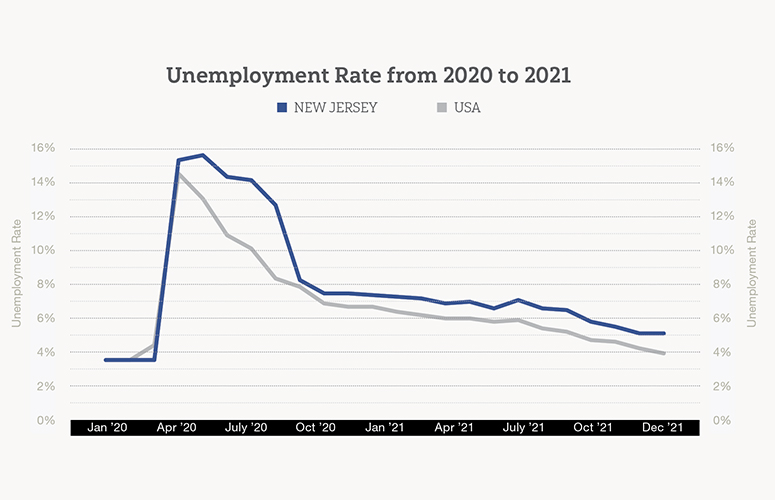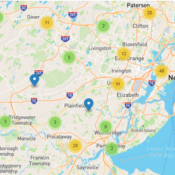New Jersey’s Changing Employment Landscape
Record-high unemployment caused by the pandemic began to recede in 2021, but new obstacles continued to challenge New Jersey’s economic recovery.
Unemployment: Although unemployment in New Jersey remained stubbornly high for much of the year compared to most other states, progress was evident in the final months of 2021.
From January to June, the unemployment rate in New Jersey fell just 0.2 percentage points (from 7.3% to 7.1%, respectively). Workers fared better in the year’s second half, however, as the state’s unemployment rate fell 2 full percentage points to 5.1% in December.

Labor Force: Though larger than in the months following COVID-19’s onset, New Jersey’s labor force (the number of people either working or actively looking for work) remained significantly smaller in 2021 than it had been two years prior.
As of December, New Jersey’s labor force was comprised of approximately 4.63 million residents ages 16 and older – a roughly 2% decline from the 4.73
million residents who were working or looking for work in January 2020 before the pandemic fueled unemployment. Similarly, the share of the population engaged in the labor force (the labor force participation rate) remained 1.6 percentage points lower in December 2021 than it had been prior to the pandemic (62.6%).
Resignations: One of the most frequently discussed trends of 2021 was the emergence of the “Great Resignation.” According to the Bureau of Labor Statistics (BLS), the number of Americans quitting their jobs reached an all-time high in November 2021.
New Jersey, like most Northeastern states, saw an uptick in quits as well, but one which was less pronounced than the rest of the country, according to BLS’ state-level surveys. New Jersey’s average quit rate throughout 2021 was approximately 2.4%, compared to the national average of 2.7%.
With an estimated 291,000 job openings in December, it’s no surprise New Jersey workers feel confident switching positions, and the need to compete for talent may have driven wages higher and helped bring workers off the sidelines. Still, whether due to retirement, new caregiving responsibilities, or COVID-19 fears, as recently suggested by the Federal Reserve, bringing additional workers back into the labor force will be key to meeting demand moving forward in several key industries.
This content was published in the May 2022 Edition of the NJ Business Magazine.





